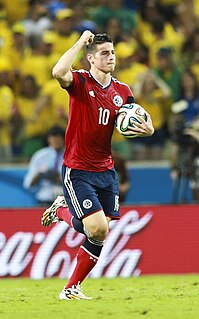 W
WAway colours are a choice of coloured clothing used in team sports. They are required to be worn by one team during a game between teams that would otherwise wear the same colours as each other, or similar colours. This change prevents confusion for officials, players, and spectators. In most sports, it is the visiting or road team that must change – second-choice kits are commonly known as away kits or change kits in English.
 W
WBall boys and ball girls are individuals, usually youths, who retrieve and supply balls for players or officials in sports such as association football, American football, bandy, cricket, tennis, baseball and basketball. Though non-essential, their activities help to speed up play by reducing the amount of inactive time.
 W
WA box score is a structured summary of the results from a sport competition. The box score lists the game score as well as individual and team achievements in the game.
 W
WA bracket or tournament bracket is a tree diagram that represents the series of games played during a knockout tournament. Different knockout tournament formats have different brackets; the simplest and most common is that of the single-elimination tournament. The name "bracket" is American English, derived from the resemblance of the links in the tree diagram to the bracket punctuation symbol ] or [. The closest British term is draw, although this implies an element of chance, whereas some brackets are determined entirely by seeding.
 W
WIn team sport, captain is a title given to a member of the team. The title is frequently honorary, but in some cases the captain may have significant responsibility for strategy and teamwork while the game is in progress on the field. In either case, it is a position that indicates honor and respect from one's teammates – recognition as a leader by one's peers. In association football and cricket, a captain is also known as a skipper.
 W
WA champion is the victor in a challenge, contest or competition. There can be a territorial pyramid of championships, e.g. local, regional / provincial, state, national, continental and world championships, and even further (artificial) divisions at one or more of these levels, as in association football. Their champions can be accordingly styled, e.g. national champion, world champion. The champions
 W
WThe coach's box is a term used in numerous sports. In baseball, it is the space where the first base coach and third base coach stands.
 W
WThe coaching staff is a group of non-athletes tied to a sports team. A coaching staff can be existent at all levels of athletics. It is led by a head coach, and consists of at least one assistant coach, together with other members such as doctors, massage therapists, trainers, and equipment managers, fitness trainer, nutritionist, biomechanist, physiotherapist, etc. The members of the coaching staff are required to go through several trainings and courses to ensure reliability.
 W
WA director of football is a senior management figure at an association football team most commonly in Europe. The exact nature of the role is often unclear and causes much debate in the sports media.
 W
WIn sports, an ejection is the removal of a participant from a contest due to a violation of the sport's rules. The exact violations that lead to an ejection vary depending upon the sport, but common causes for ejection include unsportsmanlike conduct, violent acts against another participant that are beyond the sport's generally accepted standards for such acts, abuse against officials, violations of the sport's rules that the contest official deems to be egregious, or the use of an illegal substance to better a player's game. Most sports have provisions that allow players to be ejected, and many allow for the ejection of coaches, managers, or other non-playing personnel.
 W
WAn exhibition game is a sporting event whose prize money and impact on the player's or the team's rankings is either zero or otherwise greatly reduced. In team sports, matches of this type are often used to help coaches and managers select and condition players for the competitive matches of a league season or tournament. If the players usually play in different teams in other leagues, exhibition games offer an opportunity for the players to learn to work with each other. The games can be held between separate teams or between parts of the same team.
 W
WIn sports, a false start is a movement by a participant before being signaled or otherwise permitted by the rules to start. Depending on the sport and the event, a false start can result in a penalty against the athlete's or team's field position, a warning that a subsequent false start will result in disqualification, or immediate disqualification of the athlete from further competition.
 W
WIn sports, a farm team, farm system, feeder team, or nursery club is generally a team or club whose role is to provide experience and training for young players, with an agreement that any successful players can move on to a higher level at a given point, usually in an association with a major-level parent team. This system can be implemented in many ways, both formally and informally. It is not to be confused with a practice squad, which fulfills a similar developmental purpose but the players on the practice squad are members of the parent team.
 W
WA focus mitt is a padded target attached to a glove and usually used in training boxers and other combat athletes.
 W
WA football player or footballer is a sport person who plays one of the different types of football. The main types of football are association football, American football, Canadian football, Australian rules football, Gaelic football, rugby league and rugby union.
 W
WFootwork is a martial arts and combat sports term for the general usage of the legs and feet in stand-up fighting. Footwork involves keeping balance, closing or furthering the distance, controlling spatial positioning, and/or creating additional momentum for strikes.
 W
WA free kick is an action used in several codes of football to restart play with the kicking of a ball into the field of play.
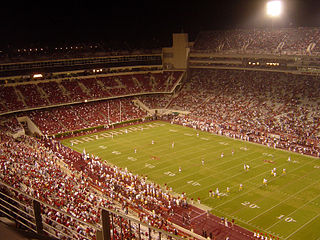 W
WGarbage time is a term used to refer to the period toward the end of a timed sports competition that has become a blowout when the outcome of the game has already been decided, and the coaches of one or both teams will decide to replace their best players with substitutes. This serves to give those substitutes, who are usually less experienced or younger players, actual playing experience, as well as to protect the best players from the possibility of injury.
 W
WThe Gatorade shower, also known as the Gatorade dunk or the Gatorade bath, is a sports tradition that involves players surreptitiously dumping a cooler full of liquid over the head of their coach following a meaningful win, such as the Super Bowl, World Series or other major sporting event. This includes all levels of play including Little League World Series, high school, college (NCAA) and professional teams.
 W
WIn sport, a goal may refer to either an instance of scoring, or to the physical structure or area where an attacking team must send the ball or puck in order to score points. The structure of a goal varies from sport to sport, and one is placed at or near each end of the playing field for each team to defend. For many sports, each goal structure usually consists of two vertical posts, called goal posts, supporting a horizontal crossbar. A goal line marked on the playing surface between the goal posts demarcates the goal area. Thus, the objective is to send the ball or puck between the goal posts, under or over the crossbar, and across the goal line. Other sports may have other types of structures or areas where the ball or puck must pass through, such as the basketball hoop.
 W
WA halftime show is a performance given during the brief period between the first and second halves, or the second and third quarters, of a sporting event. Halftime shows are not given for sports with an irregular or indeterminate number of divisions, or for sports that do not have an extended period of stoppage in play. Ice hockey games consist of three periods, so there are in effect two halftimes at a hockey game: the first intermission is between the first and second periods, and the second intermission comes between the second and third periods. The intermissions are usually given over to contests involving randomly selected audience members, although for major games, like the Winter Classic, the Stanley Cup Finals, the NHL All-Star Game and the Frozen Four, the intermission between the 2nd and 3rd period often features entertainment typically found during halftime shows.
 W
WA head start is a start in advance of the starting position of others in the competition, or simply toward the finish line or desired outcome. Depending on the situation, a head start may be inherent, obtained by special privilege, earned through one's accomplishments, or granted mercifully by an opponent.
 W
WA jab is a type of punch used in the martial arts. Several variations of the jab exist, but every jab shares these characteristics: while in a fighting stance, the lead fist is thrown straight ahead and the arm is fully extended from the side of the torso. This process also involves a quick turn of the torso. It is an overhand punch; at the moment of impact, the pronated fist is generally held in a horizontal orientation with the palm facing the ground.
 W
WJunior varsity players are the members of a team who are not the main players in a competition, usually at the high school and college levels in the United States. The main players comprise the varsity team. Although the intensity of the JV team may vary from place to place, most junior varsity teams consist of players who are in their freshman and sophomore years in school, though occasionally upperclassmen may play on JV teams. For this reason, junior varsity teams are also often called freshman/sophomore teams. Especially skilled or physically mature freshmen and sophomores may compete at the varsity level. Some private school associations may permit very skilled seventh- or eighth-graders to compete on varsity teams. At larger schools, there may be two junior varsity teams for some sports, with a lower-level team typically consisting only of freshmen.
 W
WA liver shot or liver punch is a punch, kick, or knee strike to the right side of the ribcage that damages the liver. Blunt force to the liver can be excruciatingly painful, and an especially effective shot will incapacitate a person at once. Thus, in combat sports, liver shots often result in technical knockouts (TKOs).
 W
WIn sports, a loan involves a particular player being able to temporarily play for a club other than the one to which they are currently contracted. Loan deals may last from a few weeks to a full season, sometimes persisting for multiple seasons at a time.
 W
WIn sports, a losing streak or cold streak is an uninterrupted string of contests lost by a team or individual. A losing streak is thus the opposite of a winning streak. A losing streak can last as few as two games, or it may last much longer.
 W
WIn sports, a most valuable player award is an honor typically bestowed upon an individual as the most performing player in an entire league, for a particular competition, or on a specific team. Initially used in professional sports, the term is now also commonly used in amateur sports, as well as in other unrelated fields such as media, business, and music. In many sports, MVP awards are presented for a specific match—in other words, a player of the match award.
 W
WIn sports, particularly team sports, the player name, often referred to as the uniform name, squad name, jersey name, shirt name is the name worn on a player's uniform.
 W
WIn team sports, the number, often referred to as the uniform number, squad number, jersey number, shirt number, sweater number, or similar is the number worn on a player's uniform, to identify and distinguish each player from others wearing the same or similar uniforms. The number is typically displayed on the rear of the jersey, often accompanied by the surname. Sometimes it is also displayed on the front and/or sleeves, or on the player's shorts or headgear. It is used to identify the player to officials, other players, official scorers, and spectators; in some sports, it is also indicative of the player's position.
 W
WOffside, often pluralized as Offsides in American English, is a rule used by several different team sports regulating aspects of player positioning. It is particularly used in field sports with rules deriving from the various codes of football, such as association football, rugby union and rugby league, and in some other sports e.g. ice hockey, field hockey and bandy.
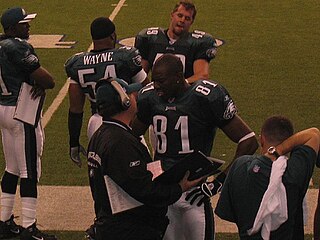 W
WIn sports, out of bounds refers to being outside the playing boundaries of the field. Due to the chaotic nature of play, it is normal in many sports for players and/or the ball to go out of bounds frequently during a game. The legality of going out of bounds, and the ease of prevention, vary by sport. In some cases, players may intentionally go or send the ball out of bounds when it is to their advantage.
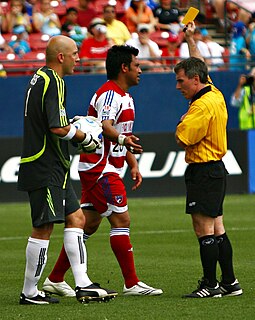 W
WPenalty cards are used in many sports as a means of warning, reprimanding or penalising a player, coach or team official. Penalty cards are most commonly used by referees or umpires to indicate that a player has committed an offence. The official will hold the card above his or her head while looking or pointing towards the player that has committed the offence. This action makes the decision clear to all players, as well as spectators and other officials in a manner that is language-neutral. The colour or shape of the card used by the official indicates the type or seriousness of the offence and the level of punishment that is to be applied. Yellow and red cards are the most common, typically indicating, respectively, cautions and dismissals.
 W
WA penalty shot or penalty kick is a play used in several sports whereby a goal is attempted during untimed play. Depending on the sport, when a player commits certain types of penalties, the opposition is awarded a penalty shot or kick attempt. The rules on how a player attempts a penalty shot or kick also varies between sports.
 W
WPlayer escort (also called match mascot or child mascot is a child who accompanies football player entering the pitch. Player escorts hold hands with the footballer while they walk in and stay with the player during the playing of the national anthem. The children are usually between 6 and 18 years old. In addition to assisting players, they often have duties such as carrying flags, helping the sideline ball crew and playing matches with each other.
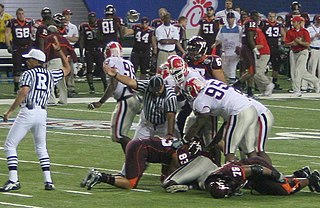 W
WIn sports, possession is physical control of the ball or other implement of play by one team, which typically gives that team the opportunity to score. Sports have different rules governing how possession is kept or lost, which affect the strategy of gameplay. The number of possessions or total time of possession are often useful statistics of team or individual performance.
 W
WRepechage is a practice in series competitions that allows participants who failed to meet qualifying standards by a small margin to continue to the next round. A well known example is the wild card system.
 W
WRetiring the number of an athlete is an honor a team bestows upon a player, usually after the player has left the team, retires from the sport, or dies. Once a number is retired, no future player from the team may wear that number on their uniform, unless the player so-honored permits it; however, in many cases the number cannot be used at all. Such an honor may also be bestowed on players who had highly memorable careers, died prematurely under tragic circumstances, or have had their promising careers ended by serious injury. Some sports that retire team numbers include baseball, cricket, ice hockey, basketball, American football, and association football. Retired jerseys are often referred to as "hanging from the rafters" as they are, literally, put to hang in the team's home arena.
 W
WA road game or away game is a sports game where the specified team is not the host and must travel to another venue. Most professional teams represent cities or towns and amateur sports teams often represent academic institutions. Each team has a location where it practices during the season and where it hosts games.
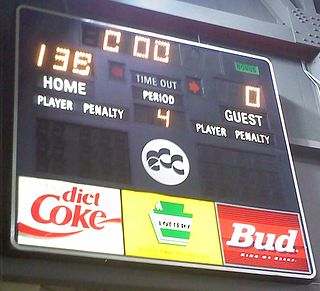 W
WRunning up the score occurs when a competitor continues to play in such a way as to score additional points after the outcome of the game is no longer in significant question and the team is all but assured of winning. In the United States and Canada, it is considered poor sportsmanship to run up the score in most circumstances. Sporting alternatives include pulling out most of the team's first string players, or calling plays designed to run out the clock. The term and the concept are not common elsewhere in the world. Mercy rules are used in many amateur sports, which ends the game when the score reaches a certain point.
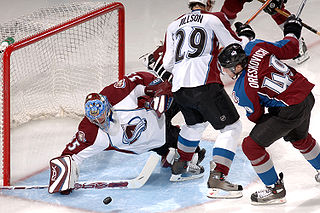 W
WIn ice hockey, a goaltender is credited with a save when they prevent a shot by the opponent from entering the net. A goaltender's efficiency in stopping shots, the save percentage, is calculated as a percentage of shots stopped divided by the total number of shots on goal. If a goaltender makes all the saves within a game it is called a shutout. In association football this is called a clean sheet.
 W
WIn sport, score is a quantitative measure of the relative performance of opponents in a sporting discipline. Score is usually measured in the abstract unit of points, and events in the competition can raise or lower the score of the involved parties. Most games with score use it as a quantitative indicator of success in the game, and in competition, a goal is often made of attaining a better score than one's opponents in order to win.
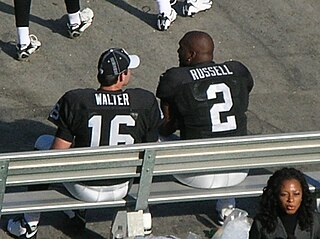 W
WThe "sidelines" are the white or colored lines which mark the outer boundaries of a sports field, running parallel to each other and perpendicular to the goal lines. The sidelines are also where the coaching staff and players out of play operate during a game. The area outside the sidelines is said to be out of bounds. The term is predominantly in use in American football, Canadian football, field lacrosse and basketball.
 W
WIn sports, a starting lineup is an official list of the set of players who will participate in the event when the game begins. The players in the starting lineup are commonly referred to as starters, whereas the others are substitutes or bench players.
 W
WA throw-in is a method of restarting play in a game of association football when the ball has exited the side of the field of play. It is governed by Law 15 of The Laws Of The Game.
 W
WUnsportsmanlike conduct is a foul or offense in many sports that violates the sport's generally accepted rules of sportsmanship and participant conduct. Examples include verbal abuse or taunting of an opponent or a game official, an excessive celebration following a scoring play, or feigning injury. The official rules of many sports include a general provision whereby participants or an entire team may be penalized or otherwise sanctioned for unsportsmanlike conduct.
 W
WThe wave is an example of metachronal rhythm achieved in a packed stadium when successive groups of spectators briefly stand, yell, and raise their arms. Immediately upon stretching to full height, the spectator returns to the usual seated position.